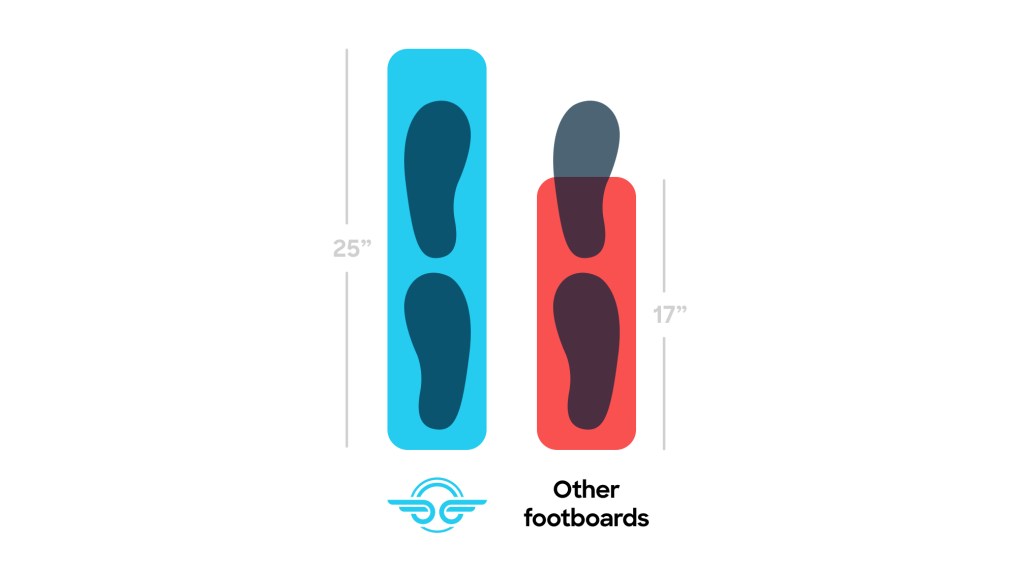Bird increases size of footboard on e-scooters to improve rider safety
- Like
- Digg
- Del
- Tumblr
- VKontakte
- Buffer
- Love This
- Odnoklassniki
- Meneame
- Blogger
- Amazon
- Yahoo Mail
- Gmail
- AOL
- Newsvine
- HackerNews
- Evernote
- MySpace
- Mail.ru
- Viadeo
- Line
- Comments
- Yummly
- SMS
- Viber
- Telegram
- Subscribe
- Skype
- Facebook Messenger
- Kakao
- LiveJournal
- Yammer
- Edgar
- Fintel
- Mix
- Instapaper
- Copy Link
Posted: 15 November 2021 | Intelligent Transport | No comments yet
With passenger safety and scooter stability at the heart of the agenda, Bird has launched its newest shared micro-electric vehicles, which has an increased and longest footboard size in the industry.


Credit: Bird
Bird has increased the size of the footboards on its e-scooters after a study revealed a stark difference in the way some users stand whilst operating the scooters. The micro-mobility operator claims its footboards are now the longest in the industry.
Bird says the idea to lengthen the footboard was first explored in an April 2020 study on micro-mobility vehicle dynamics published by the Society of Automotive Engineers (SAE). One of the study’s authors, expert Biomechanist Dr. Christina Garman, was hired by Bird after its publication.
The study found that, in general, scooter operations are both rider dependent and difficult to predict. Some riders prefer to stand in a linear fashion with their dominant foot forward, others in a linear fashion with their non-dominant foot forward. Still others stand with their feet side by side, parallel to each other. Each of these positions has an impact on a rider’s base of support, which in turn impacts how a scooter turns, brakes, and accelerates.
The best way to account for all of these variables, according to the study, is to design vehicles that accommodate, within reason, as many riding styles and rider sizes as possible – which led to Bird increasing the size of its footboard.


Credit: Bird
The footboards on the newest Bird Three scooters measure 25 inches (63.5cm), intentionally longer than any other shared scooter currently in operation. The operator says it has done this not only to increase riders’ comfort and stability at any speed, but to allow for the greatest variety of potential rider sizes as well.
Bird says research indicates that footboards under 18 inches (46cm) in length, similar to the design dimensions of toy scooters, present significant stability and inclusivity issues. These may prevent large swaths of riders from standing safely and comfortably on a scooter. A footboard with a 17 inches (43cm) length, e.g., corresponds to a woman’s size four shoe when standing in linear fashion. Such reduced foot space isn’t only exclusionary; it can be an unbalancing factor that presents safety concerns for larger riders, forcing them to stand with significant parts of their feet unsupported over the edge of the footboard.
“Balance can be defined as the capability of keeping the center of mass (COM) over its base of support (BOS), and a larger BOS provides greater stability,” said Dr. Hoda Koushyar, an expert in both biomechanics and human performance/stability and a professor at Tufts University.
“For scooter riding, the more surface area of the foot that is in contact with the deck, the greater the rider’s BOS. Therefore, a wider and longer deck would provide the opportunity for the individual to manipulate and move their feet allowing for BOS adjustment and increasing stability.”


Credit: Bird
All Bird shared scooters have footboards that measure above 18 inches, a threshold it hopes will be implemented by all cities and operators to help improve safety and rider inclusiveness.
Related topics
Mobility Services, On-Demand Transport, Passenger Accessibility, Passenger Experience, Public Transport, Sustainable Urban Transport, Vehicle & Passenger Safety
Related modes
e-scooters, Electric Transport, Electric Vehicles (EV)
Related organisations
Bird, Society of Automotive Engineers (SAE)
Related people
Dr. Christina Garman, Dr. Hoda Koushyar








